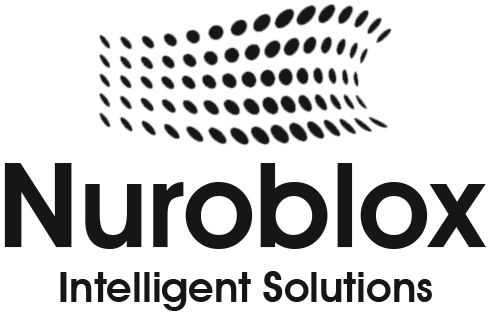Automating Internal Approval Processes with AI
Manual approval processes, whether for HR onboarding, expense reimbursements, procurement orders, or legal contracts, are notoriously slow, error-prone, and opaque. Many enterprises still rely on email chains, paper forms, and spreadsheets for approvals, which “introduce inefficiencies that quietly drain productivity.” These outdated methods are hard to scale or govern, causing time lost in repetitive tasks, approval bottlenecks, higher error rates, and compliance risks. For example, manual expense reporting often means chasing down receipts and approvals, leading 32% of companies to cite “slow reimbursements and time-consuming approvals” as major pain points.
In procurement, purchase requests can languish in an approver’s inbox, delaying orders. In legal, contracts reviewed line-by-line cause backlogs. And in HR, onboarding paperwork or leave approvals via spreadsheets means weeks of delay. In short, unautomated workflows not only slow operations but also hinder visibility and auditing, making it hard to know who approved what and when.
This blog explores how AI can transform internal approval workflows, key benefits for enterprises, and practical steps to begin automating with confidence.
- Human error and data issues– Manual data entry and email hand-offs open the door to mistakes. A single typo or a lost invoice email can create reconciliation nightmares. Paper or spreadsheet records lead to inconsistent data and missing information, undermining forecasts and budget controls.
- Long cycle times– Approval processes that rely on sending forms or chasing signatures by hand take days or weeks. Employees waste hours following up on each approval instead of doing productive work. For instance, Brex reports that each manual expense report costs about 20 minutes to process (and even then error rates can exceed 19%).
- Lack of visibility- When approvals live in email or silos, managers can’t easily track status or spot bottlenecks. Delays go unnoticed and accountability is blurred. According to Kissflow, scattered manual workflows leave leaders “without centralized oversight,” making it easy for tasks to slip through the cracks.
- Compliance and audit risk– Regulatory demands require clear audit trails for decisions. Manual approvals make it hard to prove who did what and when. Kissflow notes that manual processes “make it difficult to trace who did what, when, and why,” raising compliance headaches. In finance or legal matters, missed documentation or improper sign-offs can become costly.
In each domain, HR, finance, procurement, and legal these problems manifest differently but with the same root causes. For example, in HR tasks like onboarding or payroll changes, manual checks can delay an employee start or paycheck; automation in these areas “frees up time for more important work,” enabling HR to focus on strategic goals rather than paperwork.
In expense management, manual workflows lead to slow reimbursements and low policy compliance, frustrating staff and controllers alike. Procurement teams suffer when POs wait days for approval, slowing the supply chain. Legal teams likewise face bottlenecks: reviewing contracts line-by-line delays deals, and missing risk clauses can cause future disputes. Overall, manual approvals burn cycles and create risks across the business.
Benefits of AI-Powered Approval Workflows

AI-driven automation fundamentally transforms internal approvals. By embedding intelligence into workflows, organizations can accelerate processing, improve decision quality, enforce policies, and gain real-time insight. Key advantages include:
- Speed and Efficiency- AI systems can assign and route approval tasks automatically, eliminating queues and manual hand-offs. For example, integrating AI into ERP approval steps can reduce repetitive task time by up to 70% (for tasks like invoice approvals and data entry). Automation triggers instant notifications and reminders so approvals don’t stall. Instead of waiting days for a manager to forward an email, the system proactively pushes the next step, cutting idle time dramatically.
- Greater Accuracy– AI removes many human error points. Machine learning models learn from historical data to validate entries and flag anomalies. In practice, AI-powered workflows analyze each transaction and spot inconsistencies (duplicate invoices, out-of-policy claims, etc.) before a human even reviews them. This not only reduces mistakes but also “provides insightful analytics” for better decision-making.
- Improved Compliance– Automated approvals come with built-in governance. Systems enforce business rules and audit every action by default. For example, AI platforms log each approval step (who approved, timestamp, data changes) and can enforce multi-level sign-offs for high-risk items. This ensures that regulatory requirements – from SOX to GDPR – are met automatically. Cflow notes that modern AI workflow tools include “role-based access controls, detailed audit trails, and policy-based workflow governance,” making compliance much easier. Expense automation solutions also allow embedding policy rules into every transaction, achieving “up to 99% compliance” by automatically enforcing spend limits and receipting requirements.
- Visibility and Reporting– With an AI-enhanced platform, every approval is tracked in real time. Managers get dashboards showing pending approvals, processing times, and bottlenecks. As Kissflow observes, centralized workflow platforms give leaders “real-time tracking, audit logs, and reporting dashboards” so nothing is hidden. This transparency allows teams to measure KPIs (throughput, approval times, exception rates) and continuously optimize the process.
- Scalability and Agility– AI workflows adapt to growing volumes without adding manual effort. A rules engine can automatically expand logic (add new approvers, change thresholds) as policies evolve. Cflow explains that AI-augmented ERP workflows become “self-optimising systems that adapt, learn, and scale”, moving beyond rigid batch approvals to intelligent processes that handle variable demand.
Together, these improvements make internal approvals faster, more reliable, and easier to manage. Finance teams no longer spend weeks clearing expense backlogs; HR closes new hires within days; procurement prevents stockouts by fast-tracking orders; legal can sign NDAs and contracts with embedded risk scoring. In short, AI turns the approval chain into a streamlined, governed operation.
Key AI Technologies Behind Approval Automation
Modern AI approval workflows rely on a mix of intelligent technologies:
Machine Learning (ML)- ML models analyze historical approval data to predict outcomes and flag exceptions. For instance, an ML model can be trained on past invoices to learn what a legitimate invoice looks like, then spot anomalies (duplicates or fraud) on new ones. As Cflow notes, ML “identifies patterns, predicts future outcomes, and makes data-driven decisions,” essential for automating judgment-based tasks like exception handling.
Natural Language Processing (NLP)- NLP allows systems to understand unstructured text emails, memos, request descriptions, or even chat conversations. This is critical when approval forms contain free-text (e.g. a justification email for a purchase). NLP engines can extract intent (e.g. “needs approved for $500 because…”) and classify it to route correctly. Cflow explains that NLP helps “understand, respond, and even manipulate human language” and is vital for processing large volumes of text quickly and accurately.
Optical Character Recognition (OCR) / Computer Vision- OCR converts images or scanned documents into digital text. In approvals, OCR is used to read paper forms, invoices, or receipts.
For example, an AI workflow can OCR a receipt image submitted by an employee, extract vendor, date, and amount, and auto-fill the expense form. Cflow highlights that computer vision (OCR) can “extract relevant details from scanned documents, IDs, or receipts,” feeding data into the workflow without manual entry.
Robotic Process Automation (RPA)- RPA bots mimic human actions to automate interactions across systems. In approval workflows, RPA can do things like log into an ERP to post an approved PO or move data between legacy apps. When combined with AI, RPA goes beyond simple scripts: it can interpret applications and make rule-based decisions on the fly. As Cflow points out, AI-enabled RPA “handles repetitive tasks by mimicking human actions” and can “interpret applications, validate data, and make rule-based decisions without human intervention”.
Business Rules Engines- These define the logic of the approval process (e.g. “if invoice > $10,000 route to CFO; otherwise route to manager”). Rules engines ensure that every case follows corporate policy. In an AI workflow, rules work alongside ML and NLP to handle the straightforward decision paths, while AI handles the complex, data-driven parts. According to Cflow, intelligent automation combines “AI, RPA, and business rules” to create adaptive, end-to-end processes.
Integration & APIs- Crucially, all these AI components plug into enterprise systems via APIs or connectors. Whether it’s pulling employee info from an HRMS or posting an approval in an ERP, AI workflows communicate securely and in real time. For example, systems like Cflow “integrate with major ERP systems using REST APIs,” so that an invoice entry in the ERP can automatically trigger an AI-assisted approval workflow. Similarly, AI engines can call on CRM or HRMS APIs to fetch relevant data (e.g. credit limits, employee records) to inform approvals. As one expert notes, AI workflow tools integrate with CRMs, ERPs, and HRMS platforms “to enable seamless end-to-end workflow automation”.
By orchestrating these technologies ML, NLP, OCR, RPA, and rule engines – an enterprise gains what some call “intelligent automation.” This means the system doesn’t just execute static scripts; it learns from data, handles exceptions, and adapts over time. For example, if an AI expense approval flags an outlier spend and a manager overrides it, that feedback can be used to refine the ML model. Over time, the workflows become more accurate and require less human tuning.
Integrating AI Workflows with ERP, HRMS, CRM
In practice, internal approvals don’t happen in a vacuum – they involve core enterprise applications. Automating approvals means connecting AI workflows with systems like ERPs (SAP, Oracle, Microsoft Dynamics), HRMS (Workday, SuccessFactors), and CRMs (Salesforce, Microsoft CRM). The good news is that modern AI workflow platforms are built to plug into these systems:
1. ERP Integration- AI workflows can be embedded in the procure-to-pay, order-to-cash, or record-to-report processes of an ERP. For instance, when a purchase order enters the SAP system, the AI engine can pull the document, apply OCR/NLP to read the details, and route it through a digital approval chain. Cflow’s ERP guide notes that using RESTful APIs and prebuilt connectors allows “real-time updates for transactions, approvals, and status changes” between the ERP and the AI system. After approval, the AI bot can automatically push the approved PO back into the ERP, eliminating manual data entry. This tight integration means approvals can be triggered by live ERP events (new invoice, credit hold, inventory reorder point) and resolved within the same ecosystem.
2. HRMS Integration- In HR scenarios, AI workflows link to HR data for faster decisions. For example, a leave request submitted in Workday can launch an AI workflow that reads the employee’s tenure, manager level, and remaining vacation days via HRMS APIs, then applies company policy to auto-approve simple requests or escalate special cases. Similarly, onboarding forms filled in a portal can feed directly into the workflow, and the final approvals (background check, equipment order) can be written back to the HRMS. This bi-directional exchange ensures employee records stay current and managers see approvals in their familiar HR interfaces.
3. CRM Integration- Sales and service approvals often originate in the CRM. Imagine a sales rep requests an exception to a contract via Salesforce. An AI workflow can extract the contract details, run risk-scoring models, and route the request for legal review – all while syncing status back to the CRM. Tools now exist that “embed AI agents directly into Salesforce-powered workflows,” making it possible to approve discount requests or new customer credit in one pane of glass. The same principle applies to marketing or service approvals (e.g. campaign budgets, refund authorizations), which can be automated by connecting the AI platform to Salesforce, HubSpot or similar CRM systems.
In summary, AI-based approval workflows leverage APIs and middleware to become part of the enterprise IT fabric. Whether it’s posting approved invoices into the finance ERP, updating employee records in the HRMS, or changing an opportunity status in the CRM, integration ensures that AI decisions seamlessly flow through all systems. This avoids data silos and makes the automated process truly end-to-end.
Real-World Use Cases
Many organizations have already seen dramatic results from AI-powered approvals. Examples include:
Invoice & Accounts PayableA multinational company deployed AI/ML to automate its invoice approvals. The system OCR’d incoming bills, matched them to purchase orders, and flagged exceptions. The result: invoices were processed 70% faster and with near-zero errors. (Cognizant and other firms report similar AP automation yielding 100% data accuracy.)
Expense Management- Using AI, a finance team set policy-based rules so that routine expenses under a threshold auto-approve, while anomalies trigger alerts. One expense platform “analyzes each reported expense, detects non-compliant claims, and automates approval workflows,” instantly flagging any out-of-policy spend. This has cut reimbursement delays and boosted policy compliance to nearly 99%.
Legal & Contracts- Legal teams are using AI to accelerate contract review and approval. Modern contract management platforms now “route contracts to the right stakeholders – legal, finance, procurement – for sign-off, often with conditional logic based on content and risk”. These systems automatically extract and highlight key clauses (liability, termination, etc.) and flag any deviations from standard playbooks. In practice, a survey showed 58% of in-house lawyers used AI to review contracts last year, dramatically cutting the time spent on NDAs and routine agreements. Similarly, KPMG has deployed IBM Watson to analyze legal and financial documents for risk during audits, improving accuracy and speeding up the review process.
Customer Approvals- Even in customer-facing operations, AI approvals play a role. For example, service organizations use AI to triage customer requests (like returns or claims) and auto-approve the straightforward ones. In telecoms, AI chatbots can handle basic service requests, routing only complex ones to human agents.
These examples illustrate a common theme- combining AI with automation turns approval workflows into a competitive advantage. Organizations cut cost and cycle time, reduce errors, and free employees to focus on higher-value activities (strategy, customer service, innovation).
Best Practices for Implementation
To successfully implement AI-based approval workflows in an enterprise, follow these best practices:
1. Start with High-Value Pilots- Identify a critical yet bounded process (e.g. invoice approvals, travel expense claims, or employee onboarding) and pilot the AI workflow there. Mapping out the current steps and rules gives you a clear blueprint. Then configure the AI system to mirror that flow, add intelligence (OCR/NLP for data capture, ML anomaly detection), and test thoroughly. Roll out the solution in phases first to a small user group, and monitor results. Cflow recommends exactly this phased approach: “deploy in stages… use built-in dashboards to monitor KPIs like processing time, error rates, and compliance metrics” before scaling up. This iterative rollout allows you to catch issues early, refine the model, and demonstrate quick wins to stakeholders.
2. Engage Stakeholders & Train Users- Automation projects often fail due to lack of user buy-in. Involve business owners, approvers, and IT from the start. Hold workshops and train all users on the new workflow, both through hands-on demos and clear documentation. Show how the AI system aids them (e.g. email reminders, mobile approvals, guided UI). Establish support channels (help desk or vendor support) to address questions. As Cflow advises, involve end-users early and provide training to ease the transition.
3. Governance & Security- Define clear approval policies and translate them into business rules within the system. Ensure the AI workflow respects data security and privacy, implement role-based access so that users only see transactions relevant to them, and use encryption for sensitive data. Maintain full audit trails of every AI decision (including which model was used). In legal contexts, adhere to ethical guidelines: always have a human in the loop for final sign-off on judgment calls and establish when AI is only used to suggest decisions. For example, ABA Law stresses the need for “clear guidelines… human oversight… robust data security… [and] ethical standards” when deploying AI in review processes. Building this governance foundation prevents risks and boosts confidence in the system.
4. Monitor, Measure, and Iterate- Use the analytics built into the AI workflow platform to track performance. Key metrics include approval cycle time, error/exceptions rate, and user adoption. Continuously refine the system: feed back corrected errors to improve the ML models; tweak rules if policy or organizational changes occur; and gather user feedback on the workflow. Make iterative improvements the norm – treat the automation as a living system, not a one-time project. As Cflow points out, intelligent automation systems learn from each cycle, so the more you run them, the smarter they get.
5. Maintain Human-in-the-Loop- Even with AI, some approvals require judgment. Design the workflow so that any uncertain or high-risk cases are escalated to a human reviewer. For example, if the AI confidence in an invoice match is low, flag it for manual inspection. This hybrid approach keeps control in human hands for exceptions, while allowing AI to handle the routine bulk.
6. Align with IT & Compliance- Work with your IT and compliance teams to ensure the AI platform meets all technical and regulatory standards. Make sure test environments are available to trial workflows without affecting production systems. Use open APIs or approved middleware to connect systems, and document the integration architecture. Consider engaging internal audit early to review the automated process design and confirm that controls (like segregation of duties) remain effective under automation.
By carefully governing the rollout and continuously improving, enterprises can avoid common pitfalls and maximize the payoff. Early wins build momentum, and a strategic, phased implementation minimizes disruption.
Conclusion
Automating internal approvals with AI is no longer science fiction – it’s a practical business strategy that delivers measurable results. Intelligent workflows replace tedious email chains and paper forms with self-driving processes that route, decide, and record actions in real time. The outcome is clear: faster decisions, fewer errors, and greater compliance. Enterprise leaders (CIOs, HR heads, finance VPs) who embrace AI-based approvals find their teams can focus on strategy instead of signing forms. As one Cflow analyst summarizes, “AI workflow automation brings speed, intelligence, and adaptability to traditional enterprise systems, reducing manual effort, improving accuracy, and unlocking real-time insights”.
In short, AI turns approval bottlenecks into streamlined, auditable operations. By leveraging NLP and OCR to understand documents, machine learning to predict and detect issues, RPA to carry out tasks, and rules engines to enforce policy – all integrated with your ERP, HRMS, and CRM organizations, create a virtuous cycle of efficiency and control. With careful planning, strong governance, and iterative rollout, any enterprise can achieve this transformation. The result is an agile, responsive organization where approvals happen at the speed of business and everyone can see exactly where each decision stands.


